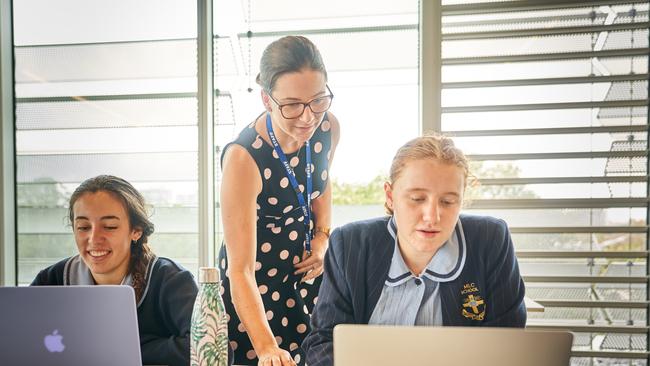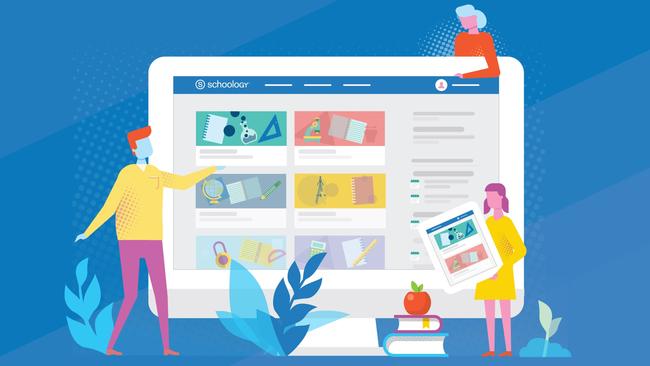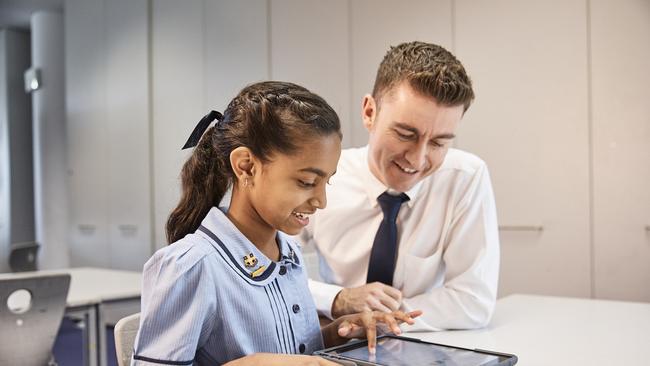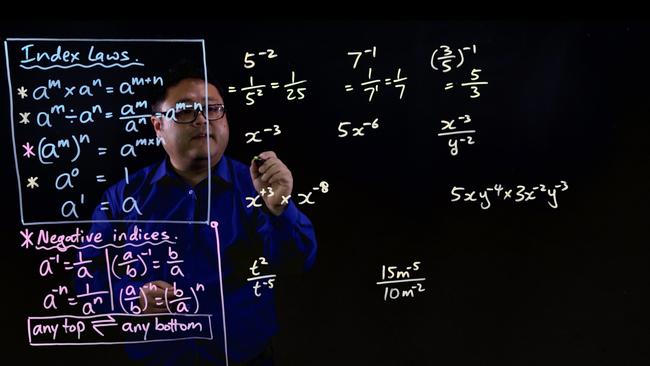Virtual school rules
Schools are readying to go online in Australia due to coronavirus.

It’s tough being an Aussie schoolkid in 2020. Like everyone else, students’ lives are being thrown into chaos by coronavirus.
With voluntary school closures happening in the private sector, and government-mandated closures on the cards, there are doubts over whether students can complete a full year’s schooling. There is a risk that Year 12 students may not finish their courses in 2020 and start uni in 2021.
According to UNESCO, 56 countries have already closed schools nationwide, disrupting the education of more than 500 million children around the world. Another 17 countries have introduced local school closures.
Australian health officials have argued that it is counter-productive to close schools for now, but some say closure in the longer term is inevitable.
Kids in the 21st century are used to accessing homework materials via online portals, watching educational videos and completing assessments on their computers and tablets at home.
MORE FROM CHRIS GRIFFITH: How tech can help you when isolated at home | How did this house survive an inferno? | The new bike you can ride on water | Fake news infects health and politics | Watchful eye on the metadata watchers
But they normally have the stimulus of daily contact with teachers and classmates at school, and the structure of lessons in an educational environment.
Those whose schools are forced to shut as a result of coronavirus will be at home all day. Online schooling will have to deliver the motivation to keep them productive and energised, and that’s uncharted waters for many schools.

State schools preparing
In the midst of this, state education departments and private sector schools have been preparing for closure and delivering and assessing students by sending work home or using the internet to deliver courses online.
In some cases, they will stream classes across the internet.
“If a school is closed, I want to assure all parents, teachers will be working remotely and available and in contact with their students to minimise the disruption to learning as much as possible,” says Victoria’s Minister for Education, James Merlino, adding that a dedicated online website, Learning From Home, will be developed in response to the outbreak.
West Australian Education and Training Minister Sue Ellery says one option is to make the state’s distance education system, used by students in remote areas, available to students more widely.
“There are a range of options that are being considered, including the School of Isolation and Distance, which already delivers online education, as well as online learning platforms which schools already use, such as Connect,” she says. Other state education departments no doubt are looking at alternative schooling modes.
The fact that Australia is practised at teaching kids remotely shows it can be done.

Online curriculum
Open Access College in South Australia has offered kindergarten (aka reception) to Year 12 distance education since 1991. It’s located in Adelaide and at Port Augusta and has 5000 enrolments across the state. It also caters to kids with special needs who have difficulty with regular schooling.
Deputy principal Jeane Schocroft says teachers and a group of students take part in video lessons using the Cisco Webex video platform. Full-time students are given a laptop. Schocroft says classes for younger students have more visual and audio content.
The platform delivery can be adjusted if there are streaming problems. “We don't use video if we know that the internet connection is not very good, but we still run an audio lesson,” she says.
The college uses online textbooks and an open-source class management system called Moodle, which offers course content. There’s much know-how out there for learning at home.
IXL (au.ixl.com) offers curriculums for maths and science and says it is used by more than eight million students.
The Khan Academy (khanacademy.org) has curriculums from kindergarten to Year 8 across maths, science and engineering, and arts and humanities. Teachers can draw on these online resources for use with their own curriculums.
Apart from Moodle, there are learning management systems such as Schoology and Blackboard that manage course material and assessment online. There are collaborative classrooms through Microsoft Teams, and tools for managing assignments and file-sharing such as Google Classroom.
If you have virtually nothing planned, a teacher could at least keep in contact with a class using a private group on Facebook, or a closed group on WhatsApp. They could monitor these groups to ward off cyber-bullying. But education-specific software is a better option.
There are also lesson and videostreaming options such as Skype, Cisco Webex, LogMein and Zoom.
LogMein is offering free organisation-wide use of its remote working tools to schools for three months. Zoom has waived costs to schools in some countries.
However, some educators say moving course content online can’t happen overnight, and that the home environment with all its distractions can impair learning.
“It takes careful planning, specific pedagogical expertise and time to set up user-test modules, activities, usage-monitoring as well as formative and summative assessments,” says Brisbane-based journalist and journalism educator Trina McLellan.
“It also requires students to have unimpeded access to sufficient hardware, software and online learning skills.”
There are pitfalls. She says students will need extra levels of concentration and motivation when working at home. “Even if schools and colleges have the very best teaching content management systems already at their disposal, in reality they have little control over what the situation and outcome will be for individual housebound students.”
There’s also the issue of fast home internet, especially when streaming video. There’s early evidence that connectivity is being stressed by more people staying at home. If your NBN delivery is insufficient, you can buy a mobile 4G modem and one or two months’ worth of mobile data. Mobile data is cheaper these days and Telstra and Optus have announced bonus data during the crisis.

Private schools set up
The private school sector, meanwhile, has been developing its own remote learning systems to handle the crisis.
Sydney’s MLC School, with 1260 students from K-12, has spent “a couple of weeks” expanding its online education system. School head of learning and teaching Linda Emms says MLC already has a learning management system for accessing course content and enabling group work and collaborations between students at home.
She says the staff is seeking to expand this offering. “Some of that will be video content, to make sure that we are able to maintain the continuity of learning for our students,” Emms says.
Students will interact with their teacher, and chat with other students visually, and video will be used to teach content and concepts in subjects such as maths.
Teachers won’t be filming classes, but “some staff will create short segments of video with explicit teaching of concepts that students can watch and rewatch in their own time”.
Parents with younger students will be able to download course material from online portals.
Sydney’s St Andrew’s Cathedral School, with 1440 students, is a gold standard for preparing for remote learning. It already has a highly developed online education system. Last Friday, it tested its system with Year 9 students working for the day from home, and on Wednesday the entire school stayed home to try it.
Deputy head of school Brad Swibel says Wednesday’s event included testing the delivery of content to younger students, conducting assessments and exams remotely, and testing the pastoral elements, where teachers and students have one-to-one chats. He says the school is now ready to operate online.
St Andrew’s uses Schoology, which enables students to communicate with teachers, and work online in groups. It also manages chat groups, file management, assignment submission, assessments, discussions and polls.

Teaching via video
Teachers can conduct online video conferences and set up breakout video rooms of groups of students from classes.
“All of those sessions are automatically recorded and archived for students to access later,” Swibel says, adding that students who have trouble accessing video conferences in real time can download them later.
He says language teachers are making videos and recording their voices with annotations using Microsoft PowerPoint.
Students also have been testing creating chat groups in Microsoft Teams. He says a bot can check that conversations don’t degenerate into bullying.
He says that students have Microsoft Surface Pro tablets from Year 3, while the youngest children use Apple iPads and an app called Seesaw, which lets parents blog and communicate with teachers. All work is uploaded for every subject on both platforms by 8.30am so that students can plan their days.
The Australian Christian College, a non-denominational group of nine religious schools, services 1400 students online.
Head of online learning Jeremy Kwok says this is the largest group of non-government distance education students. He is “really hopeful” that more schools can adapt to offering content remotely.
“This is a difficult and terrible time for our country,” Kwok says. “At the same time, I'm encouraged by literally thousands and thousands of education professionals, basically saying: ‘Yes, I will do what it takes to continue this relationship of learning with our kids’.
“I've been talking to lots of different teachers across lots of different sectors. I marvel.”
The challenge is to keep our kids engaged and learning, whether schools are locked down or not.

To join the conversation, please log in. Don't have an account? Register
Join the conversation, you are commenting as Logout